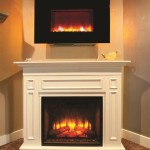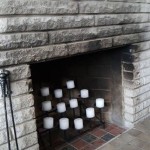Victorian Faux Marble Fireplace Surround: Aesthetic and Practical Considerations
The Victorian era, spanning from 1837 to 1901, was a period defined by its ornate aesthetic, industrial advancements, and a burgeoning middle class seeking to emulate the styles of the aristocracy. Fireplaces were central to Victorian homes, serving not only as a primary source of heat but also as a focal point for social gatherings and a statement of status. Marble fireplaces, particularly those crafted from rare and expensive varieties, were highly coveted. However, the cost and scarcity of genuine marble led to the development of faux marble techniques, making the sophisticated look accessible to a wider range of homeowners. The Victorian faux marble fireplace surround remains a popular choice today, blending historical charm with modern affordability and practicality.
A faux marble fireplace surround aims to replicate the visual characteristics of natural marble through various techniques. These methods typically involve applying paint and glazes to a base material, such as wood, slate, or cast iron. The result is a surface that mimics the veining, color variations, and polished appearance of authentic marble. The success of a faux marble finish lies in the artist's skill in creating realistic patterns and depth, often relying on layering techniques and careful attention to detail. The techniques used to create the finish evolved over time, with different approaches gaining popularity in different periods within the Victorian era.
The Allure of Faux Marble: Cost-Effectiveness and Accessibility
One of the primary reasons for the widespread adoption of faux marble was its cost-effectiveness. Genuine marble, quarried from specific locations and requiring skilled stonemasons for installation, was considerably more expensive than the materials and labor involved in creating a faux finish. This affordability made the aspirational aesthetic of a marble fireplace accessible to the growing middle class, allowing them to incorporate a touch of luxury into their homes without incurring the significant expense of genuine materials. While the wealthy continued to favor authentic marble, faux marble provided a convincing alternative for those seeking to emulate their style on a more modest budget.
Furthermore, faux marble offered greater design flexibility. While the colors and patterns of natural marble are limited to what is found in nature, faux marble could be customized to match specific interior design schemes. This allowed homeowners to achieve a cohesive and personalized look, selecting colors and veining patterns that complemented their furniture, wall coverings, and other decorative elements. This level of customization contributed to the popularity of faux marble, particularly in homes where a high degree of aesthetic coordination was desired.
The relative ease of installation also contributed to the appeal of faux marble surrounds. Compared to the weight and complexity of installing a genuine marble surround, a faux marble surround made from lighter materials like wood could be installed with less specialized labor. This reduced installation costs and made the process more manageable for homeowners undertaking renovations or new construction projects. The combination of affordability, design flexibility, and ease of installation made faux marble a compelling alternative to the real thing during the Victorian era and continues to be a popular option today.
Materials and Techniques in Victorian Faux Marble Creation
Victorian artisans employed various materials and techniques to achieve the convincing illusion of marble. The choice of base material was crucial, as it provided the foundation for the faux finish. Wood, particularly pine or poplar, was a common choice due to its availability, workability, and affordability. Slate, a denser and more durable material, was also used, offering a more substantial feel and greater resistance to heat. In some cases, cast iron was employed, providing a robust and fire-resistant base but requiring more complex manufacturing processes.
The key to creating a realistic faux marble finish lay in the application of paint and glazes. The process typically involved several layers, each contributing to the overall depth and complexity of the simulated marble. Initially, a base coat of paint, usually in a color resembling the dominant hue of the desired marble, was applied. This provided a uniform surface upon which the veining and other details could be added. Subsequent layers involved the use of specialized glazes, often mixed with pigments to create subtle variations in color and transparency. These glazes were applied with brushes, sponges, or feathers to mimic the natural patterns found in marble.
The creation of veining patterns was a particularly skilled aspect of the process. Artisans used a variety of techniques to simulate the intricate and often irregular veins that characterize marble. This might involve dragging a feather or brush through wet glaze, creating delicate lines and variations in thickness. Alternatively, sponges or rags could be used to create a mottled effect, mimicking the texture of natural stone. The most skilled artisans were able to replicate the subtle nuances of specific marble varieties, such as Carrara, Sienna, or Verde Antique.
Finally, the faux marble finish was typically sealed with a protective layer of varnish or lacquer. This provided a durable surface that was resistant to scratches, stains, and heat. The varnish also enhanced the depth and luster of the finish, giving it a polished appearance that further resembled genuine marble. The careful selection of materials and the skillful application of these techniques were essential to creating a convincing and aesthetically pleasing faux marble fireplace surround.
Maintaining and Preserving a Victorian Faux Marble Fireplace Surround
Proper maintenance is essential for preserving the beauty and integrity of a Victorian faux marble fireplace surround. The specific cleaning methods will depend on the type of finish and the base material used. Generally, a gentle approach is recommended, avoiding harsh chemicals or abrasive cleaners that could damage the painted or varnished surface. Regular dusting with a soft cloth can help prevent the build-up of dirt and grime, while occasional cleaning with a mild soap and water solution can remove more stubborn stains.
For wood-based surrounds, it is important to protect the finish from excessive moisture. Spills should be cleaned up promptly to prevent water damage, and humidifiers should be used with caution, as excessive humidity can cause the wood to warp or crack. Slate and cast iron surrounds are more resistant to moisture but should still be cleaned regularly to prevent the build-up of soot and other deposits.
Over time, the faux marble finish may show signs of wear and tear, such as scratches, chips, or fading. In such cases, restoration may be necessary. A professional conservator or experienced painter can assess the damage and recommend appropriate repair techniques. This may involve touching up small areas with matching paints and glazes or, in more severe cases, completely refinishing the surround. When undertaking restoration work, it is important to use materials and techniques that are compatible with the original finish, preserving the historical integrity of the piece.
Careful maintenance and timely repairs can ensure that a Victorian faux marble fireplace surround remains a beautiful and functional feature of a home for many years to come. By understanding the materials and techniques used in its creation and adopting appropriate preservation practices, owners can safeguard this piece of Victorian history and enjoy its aesthetic appeal for generations.

Faux Marble Hand Painted Fireplaces Traditional Painter

Painted Marble Effect On Victorian Fireplace Yorkshire Imaginative Interiors

Slate Faux Marble Fireplace What Paint And Varnish Diynot Forums

Faux Marble Fire Surround In Milton Keynes Traditional Painter

Faux Marble Fireplace Savvy Apron

Painted Marble Effect Victorian Fireplace Yorkshire Imaginative Interiors

Faux Marble Fireplace Traditional Painter

Antique Victorian Arched Marble Fireplace Before Mantel Decor Stone Feng Shui Living Room

Painted Marble Effect On Victorian Fireplace Yorkshire Imaginative Interiors

This Mornings Activity Bought And Removed Charming Late Victorian St Anne Marble Fire Surround With Antique Fireplace Decor








